One of the earliest monastic sites in Ireland, Ardmore, Co. Waterford was probably founded sometime in the 5th century AD by St. Declan. This early Irish saint was associated with the Déisi Muman people of Waterford and his missionary work amongst them may have pre-dated the activities of St. Patrick. His monastery was built on height over-looking the Irish sea and today it contains a wide range of archaeological features. These include an impressive 12th century round-tower, an early stone oratory, a ruined 12th century cathedral and two inscribed ogham stones of possible 6th century date.

The Cathedral
Although containing some earlier fabric, most of the surviving cathedral is 12th century in date and is probably related to work carried out by bishop Moelettrim O Duibh Rathra. One of its more distinctive architectural features is a Romanesque arcade along the cathedral’s western wall, which contains a number of panels depicting biblical scenes. Despite being badly worn in places, some of these images can still be discerned, including Adam and Eve, the Adoration of the Magi, the Archangel Michael weighing souls and the Judgement of Solomon.
The Ogham Stones
Inside the cathedral are at least eight medieval grave-slabs which are decorated with a variety of cross motifs as well as fleur de lis. In addition, two Ogham stones, of probable 5th or 6th century date are located along the interior walls. These contain inscriptions that are written in ogham script, an early Irish style of writing that utilised linear lines for letters. The text on the first ogham stone probably reads ‘of Luguid son of .. the tribe of Nad-Segamon‘, while the second says ‘Amadu‘ (a version of ‘beloved’ in Latin).
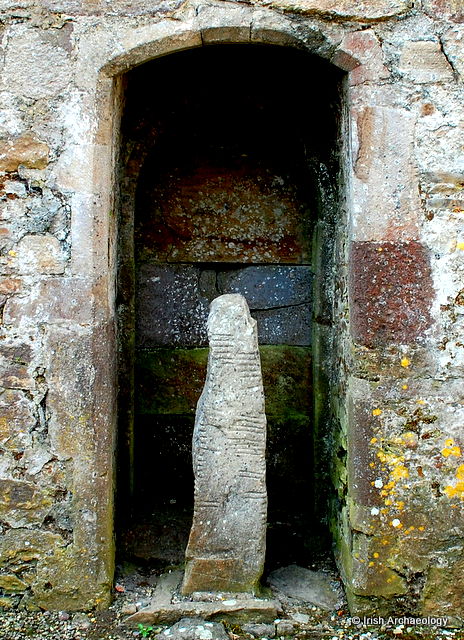
St. Declan’s Oratory
To the southeast of the cathedral is a small stone building or oratory that is said to contain the grave of Saint Declan. Possibly dating from 9th or 10th centuries AD, it was renovated in 1716 by Dr Thomas Mills, Bishop of Waterford. An important site of pilgrimage, it was traditionally visited on the saint’s feast day, the 24th of July. The floor of the oratory is covered in large flagstones and contains what appears to be a empty grave recess. This opening is meant to be the final resting place of Declan and pilgrims used to take small samples of soil from the pit as relics of the saint.
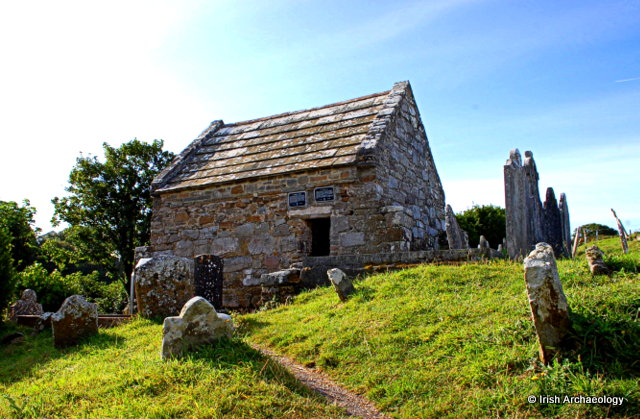
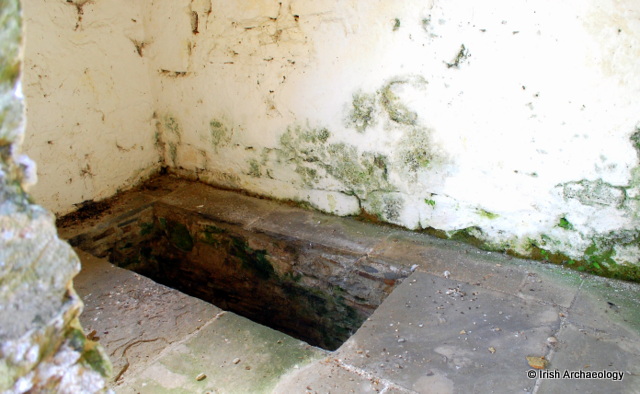
The Round Tower
Possibly the most impressive surviving building at the site is the round-tower. Circa 30m tall, this structure originally functioned as a bell tower, as well as being a place of refuge during times of trouble. For extra security the doorway was positioned 4m above ground level and was probably access via a wooden ladder that could be withdrawn inside when needed. The tower has four floors and three small windows along its body, with four more windows located at the very top, one at each of the cardinal points of the compass.
Visiting
Still used as a local cemetery, Ardmore is easily accessible to the public and contains a number of informative display boards. It is well worth a visit (location on Google Maps can be found here ).
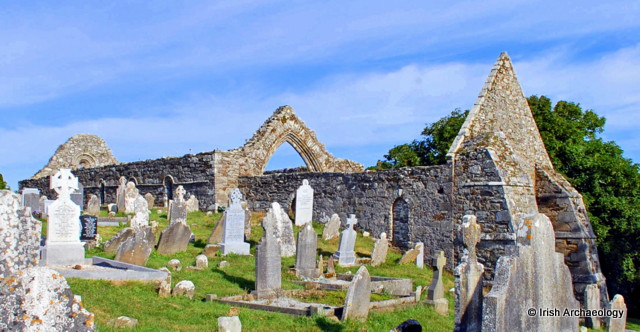


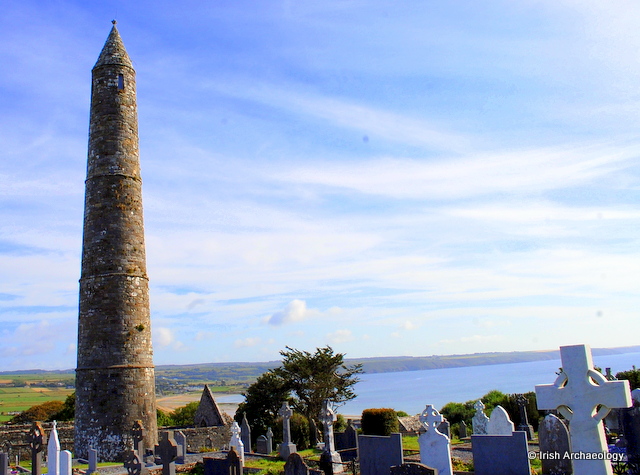






Great to see Ardmore getting some good publicity in this excellent write up, but, we overlook the ATLANTIC ocean here, not the Irish sea!
Hello, wonderful information, thanks. Is this cemetery also called “Ardmore Old Abbey”? Trying to verify information on findagrave.com
I’d imagine they are one and the same
I REALLY APPRECIATE THE LIFE OF ST DECLAN MY NAME SEEK AND WILL BE HAPPY TO KNOW MORE. I WILL ALSO BE HAPPY TO JOIN THE MONASTRY
My son was also named after this wonderful Saint. DECLAN NIALL DUHIG !!!!!
Visited yesterday and was surprised that there are no information boards now
What was the purpose of the narrow slender window high up on the wall. Was it only for light or does it have any religious or calendar significance?
I have seen this type of window in another church in Kilmolash. The church seems to have been positioned in an east/west alignment. That would give this narrow window on the west facing front wall some significance to the time of the year that either the sunlight or moonlight would pass through it. Is this the case for the St. Declan Cathedral?
Does this cemetery allow rubbings? My son Declan would like to visit and create one of his namesake’s marker.